
Transforming design through mobile
Yesterday, Adobe announced that it was releasing a new mobile app that’s meant as a game changer for designers all across the world. Maybe Adobe finally caught on to the fact that designers have active lives that involve traveling for meetings and networking, or maybe it just wants to help designers avoid the negative health effects of too much sitting. In either case, Adobe released Adobe Comp CC, which is a free productivity app that lets users mock up graphics, typefaces and user interfaces.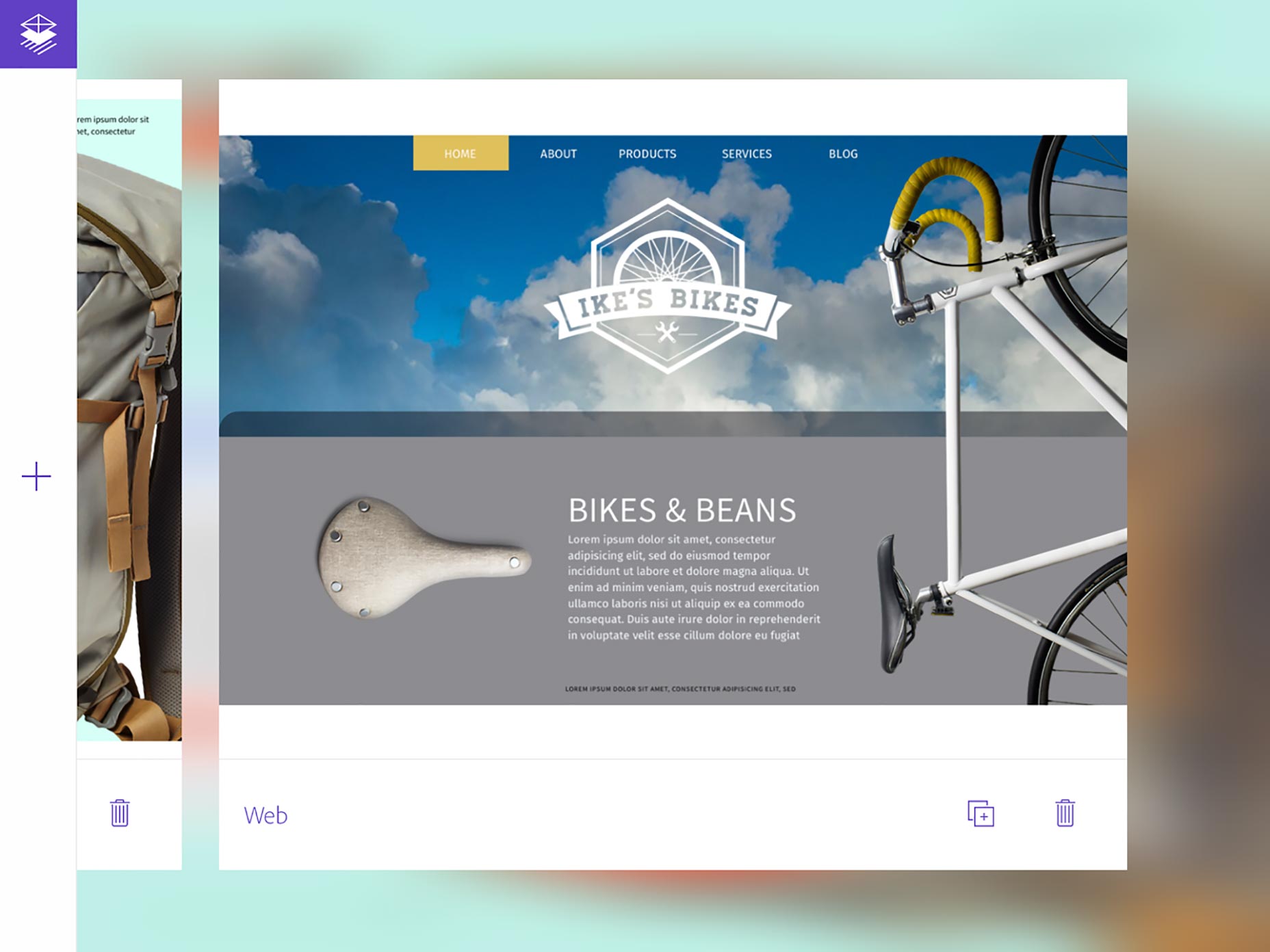 The man behind this innovative thrust is none other than Scott Belsky, better known as the founder of Behance. These days, he’s in charge of Adobe’s mobile products division, and is he ever ambitious. Over the next year or so, Belsky has plans to transform Adobe’s mobile apps into impactful multitasking tools that allow users to engage in faster workflows than what’s traditionally been possible on your desktop. So, yeah, Adobe has plans to make desktops obsolete—at least where designers are concerned.
What sets apart Adobe Comp CC is the tremendous amount of control that it empowers designers to have and use. One way this immediately becomes clear is through how its mock ups work. The app gives designers a choice of various styles of preset canvas sizes. Examples include business card, HD resolution website and iPhone screen sizes.
The man behind this innovative thrust is none other than Scott Belsky, better known as the founder of Behance. These days, he’s in charge of Adobe’s mobile products division, and is he ever ambitious. Over the next year or so, Belsky has plans to transform Adobe’s mobile apps into impactful multitasking tools that allow users to engage in faster workflows than what’s traditionally been possible on your desktop. So, yeah, Adobe has plans to make desktops obsolete—at least where designers are concerned.
What sets apart Adobe Comp CC is the tremendous amount of control that it empowers designers to have and use. One way this immediately becomes clear is through how its mock ups work. The app gives designers a choice of various styles of preset canvas sizes. Examples include business card, HD resolution website and iPhone screen sizes.
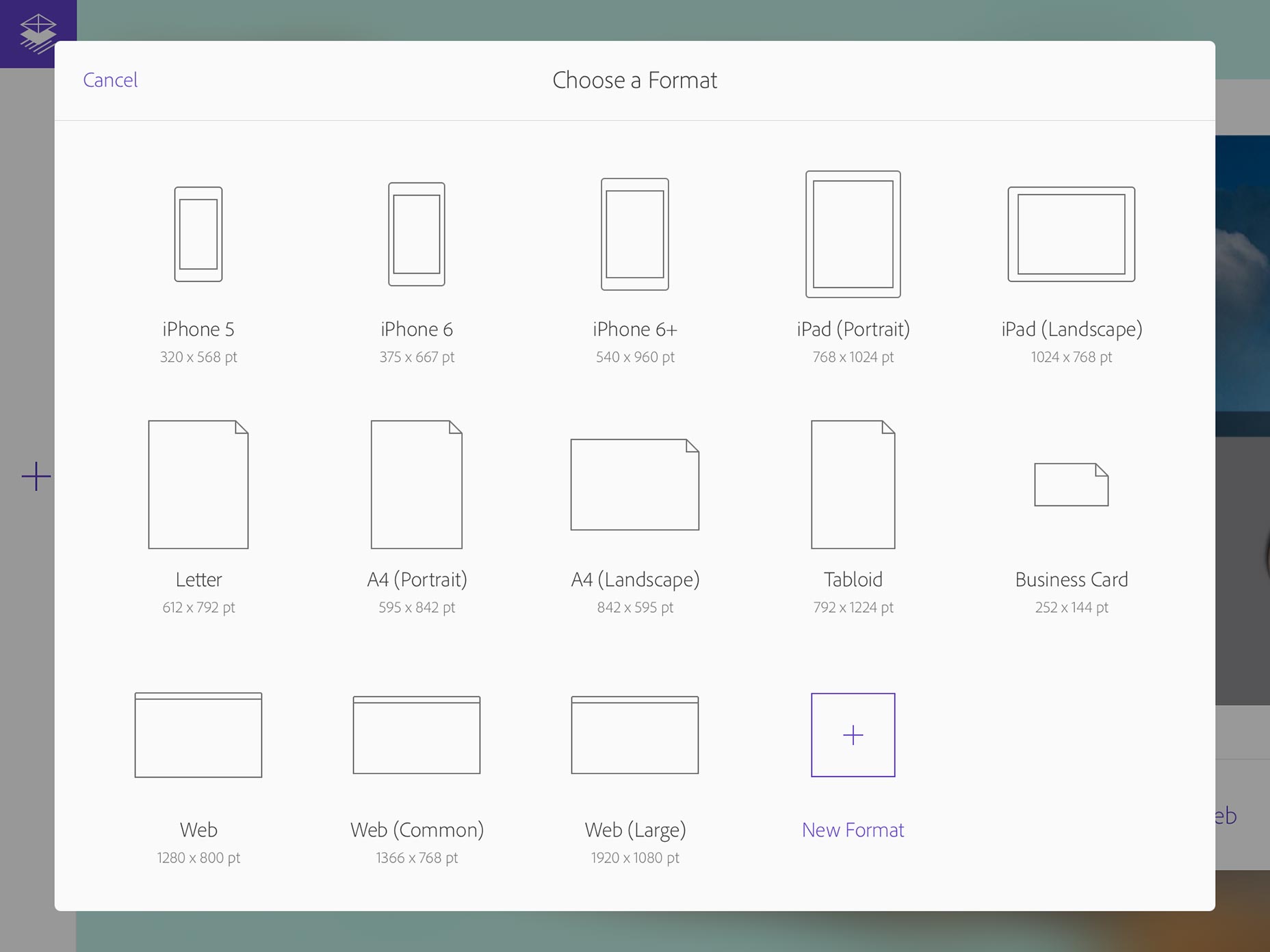 Then, users are free to make their own text, pictures and gridded shapes, all through a sequence of basic taps and pinches. Think of it as incorporating the simplicity and straightforwardness of using an iPhone…into Photoshop or Illustrator.
Belsky says that Adobe’s going to market the mobile app as “the first-mile app” for all of Adobe’s desktop products. In essence, designers can for the first time skip the daunting step of opening up a project in either Photoshop or Illustrator and just seeing the blank page…with no prompts on what to do next. With Adobe Comp CC, though, things get much, much simpler as designers only have to open the app and then can start working right out of the gate.
Then, users are free to make their own text, pictures and gridded shapes, all through a sequence of basic taps and pinches. Think of it as incorporating the simplicity and straightforwardness of using an iPhone…into Photoshop or Illustrator.
Belsky says that Adobe’s going to market the mobile app as “the first-mile app” for all of Adobe’s desktop products. In essence, designers can for the first time skip the daunting step of opening up a project in either Photoshop or Illustrator and just seeing the blank page…with no prompts on what to do next. With Adobe Comp CC, though, things get much, much simpler as designers only have to open the app and then can start working right out of the gate.
Touchscreen controls make designing intuitive
The mobile app’s easy-to-use, touchscreen controls make all the difference in the world. Tactile and intuitive, they offer users a level of instant gratification that has been a foreign concept on the Adobe desktop versions of Photoshop and Illustrator. With instant gratification comes increased productivity and efficiency. Picture this: you need to draw a circle for a wireframe, yet your finger isn’t the steadiest in the world, so your circle becomes a rough-shaped circle. The app intelligently and automatically improves this to a perfect circle. You have further options, too: You can stretch the circle to customize it as you want for your design needs, with just a simple tap. When you draw three, basic lines beside the circle, you’re looking at a handy placeholder for text as well.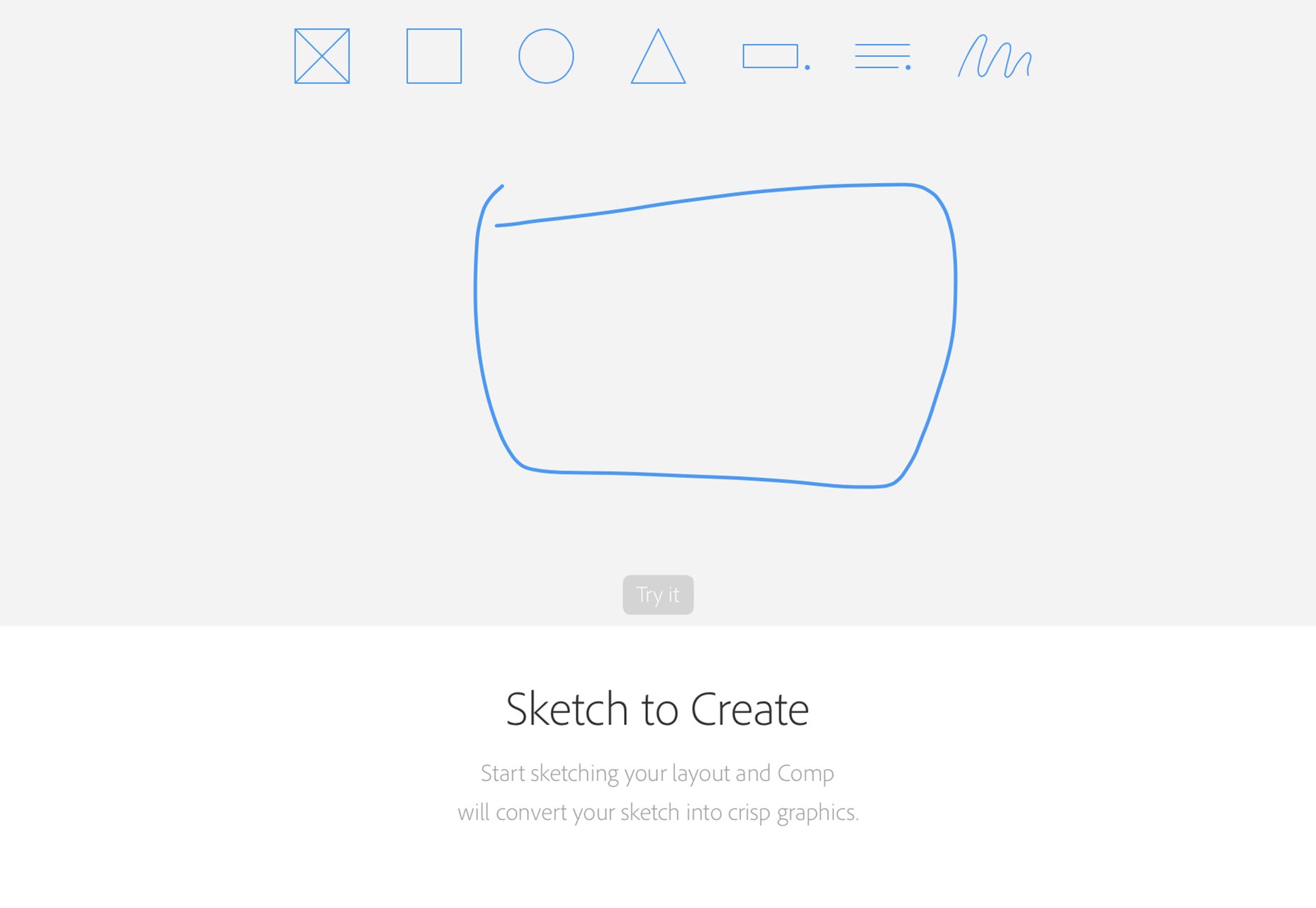 Want filler copy instead? Not a problem. By just tapping the app’s text tool, you can take the filler copy and make it paragraph, headline or subhead size. Without any friction, the text just appears where you want it, and if you want to resize it, that’s as easy as resizing the bounding box.
Here’s a nice bonus: you’re free to use any Typekit font that you want on said text. Adobe Comp CC holds the distinction for being the first mobile app to allow you to do that.
Want filler copy instead? Not a problem. By just tapping the app’s text tool, you can take the filler copy and make it paragraph, headline or subhead size. Without any friction, the text just appears where you want it, and if you want to resize it, that’s as easy as resizing the bounding box.
Here’s a nice bonus: you’re free to use any Typekit font that you want on said text. Adobe Comp CC holds the distinction for being the first mobile app to allow you to do that.
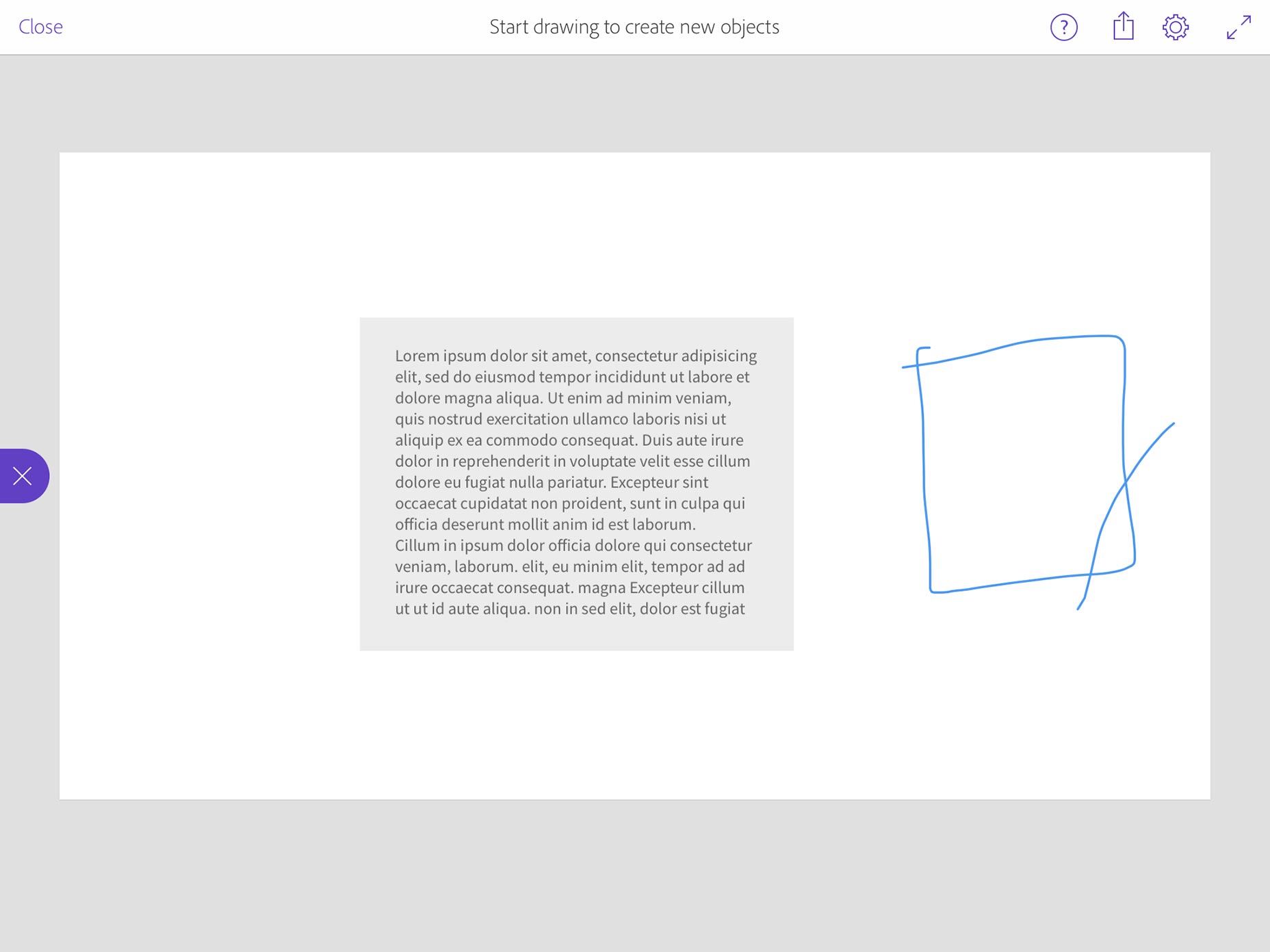
Extra features sweeten the deal
Yet that’s not all. Additional features take this mobile app from good to great. A slider allows designers to swiftly move through layers; this replaces the more unwieldy outline format that’s prevalent on Adobe’s desktop versions. A simple three-finger swipe—think your iMac’s touchpad, here—lets you quickly see the whole history of your entire composition. Then there’s also the Creative Cloud Market. It features all kinds of frequently necessary graphics, such as iOS navigation UI, that you can incorporate into your creations. This frees you up to grab all kinds of required media quickly without doing a Google search. (As of the time of publication, the Market is free, yet this is always subject to change.) While all this sounds very promising, the innovation doesn’t stop there. Perhaps the mobile app’s most attractive hook is its connectivity, which couldn’t be more important these days with workflows occurring both on desktop and mobile.Introducing the 360-degree workflow and CDF
Never before attempted, Adobe will introduce something called the “360-degree Workflow” later in 2015. This will empower designers to smoothly use media from app to app without missing a beat. To achieve this, Adobe created a file type named Compound Document Format or CDF. CDF is a universal language that both Adobe’s desktop and mobile apps share. Here’s what this means for designers: you can easily export anything you create in the mobile app to either Photoshop or Illustrator on your desktop. Your creation will appear as a vector file, complete with intact layers and 1:1 pixel accuracy. Finally, you’ll also be able to import files in all third party-supported Creative Cloud apps.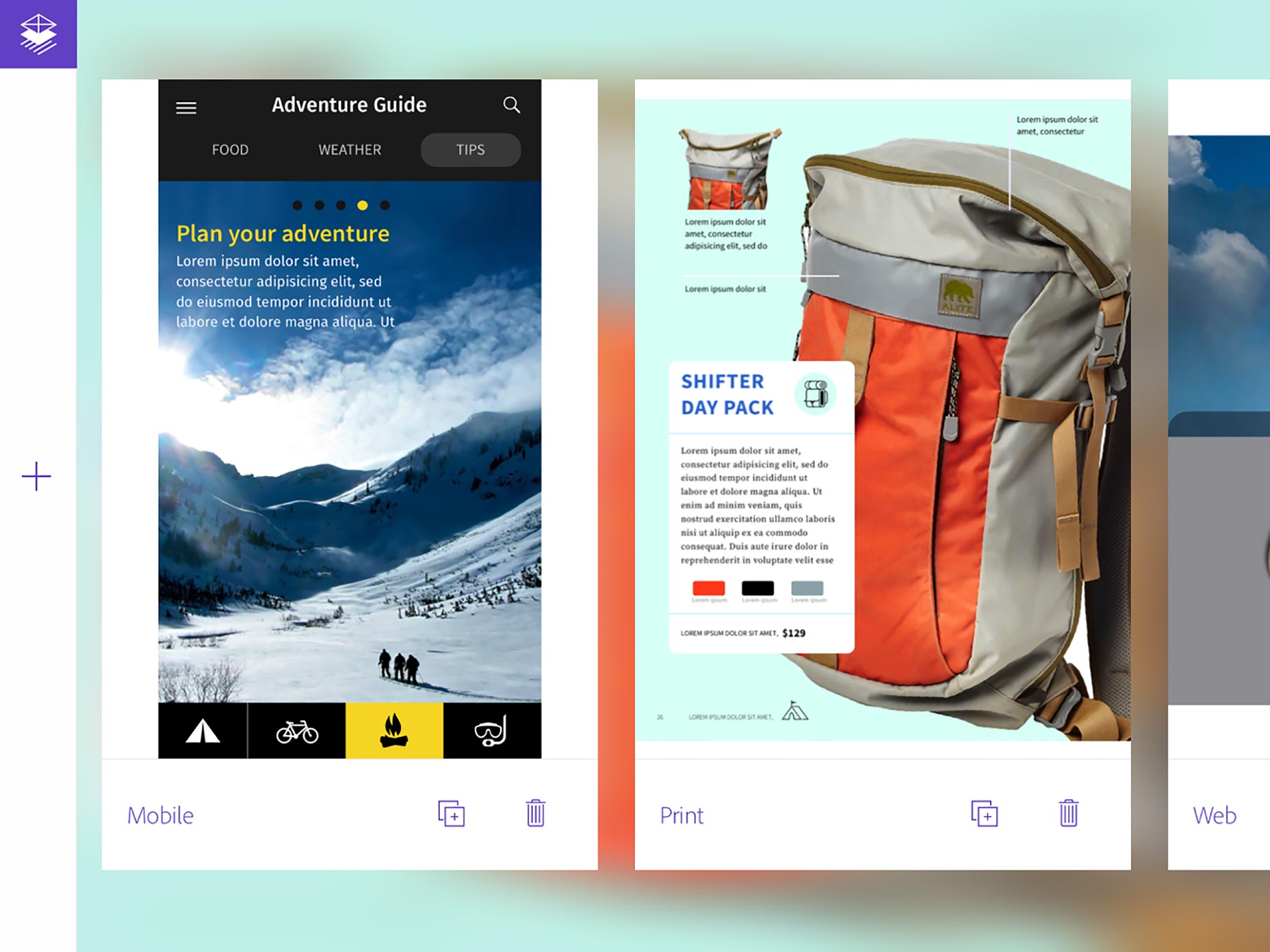 In the next few, to several months, designers should look forward to the integration of CDF sharing with the tool interfaces themselves. Various creative apps will be linked together as one, cohesive unit.
It’ll work like this. A designer taps an image he’s been working on in Adobe Comp CC that sits beside the app’s stock-sizing options. He’ll be able to open it in something like Photo Editor, which is a third-party photo app by Aviary. With one tap, the image can open up in Photo Editor and permit filter application and thorough color correction. After another tap, said image could be sent back to Comp in a jiffy.
One reason that CDF works and is immensely appealing is because all of Photoshop’s features and capabilities will never properly translate to mobile. After all, Photoshop’s designed for larger monitors and precision-driven mouse movements. Yet by utilizing deep linking like in the Photo Editor example above, Adobe can handily bypass building all of Photoshop’s features into just one app. The company doesn’t need to—any number of apps (third-party or otherwise) could prove to be the best solution for any given project.
In the next few, to several months, designers should look forward to the integration of CDF sharing with the tool interfaces themselves. Various creative apps will be linked together as one, cohesive unit.
It’ll work like this. A designer taps an image he’s been working on in Adobe Comp CC that sits beside the app’s stock-sizing options. He’ll be able to open it in something like Photo Editor, which is a third-party photo app by Aviary. With one tap, the image can open up in Photo Editor and permit filter application and thorough color correction. After another tap, said image could be sent back to Comp in a jiffy.
One reason that CDF works and is immensely appealing is because all of Photoshop’s features and capabilities will never properly translate to mobile. After all, Photoshop’s designed for larger monitors and precision-driven mouse movements. Yet by utilizing deep linking like in the Photo Editor example above, Adobe can handily bypass building all of Photoshop’s features into just one app. The company doesn’t need to—any number of apps (third-party or otherwise) could prove to be the best solution for any given project.
User response
So how will this ambitious mobile project by Adobe be received by the design community? It’s much too early to tell, of course, but early signs are indeed promising. Adobe Comp CC has already netted a perfect, five-star score from user reviews and ratings on iTunes. Not bad for an app that’s barely been available for 24 hours. Earlier this year, we told you about Serif’s push to take market share away from Photoshop by releasing a graphics editor to directly compete against Photoshop. With Adobe’s very ambitious objective to make Photoshop easier than ever to use and its app-integration plans, however, Adobe won’t be going anywhere for quite a while.Marc Schenker
Marc’s a copywriter who covers design news for Web Designer Depot. Find out more about him at thegloriouscompanyltd.com.
Read Next
15 Best New Fonts, July 2024
Welcome to our monthly roundup of the best fonts we’ve found online in the last four weeks. This month, there are fewer…
By Ben Moss
20 Best New Websites, July 2024
Welcome to July’s round up of websites to inspire you. This month’s collection ranges from the most stripped-back…
Top 7 WordPress Plugins for 2024: Enhance Your Site's Performance
WordPress is a hands-down favorite of website designers and developers. Renowned for its flexibility and ease of use,…
By WDD Staff
Exciting New Tools for Designers, July 2024
Welcome to this July’s collection of tools, gathered from around the web over the past month. We hope you’ll find…
3 Essential Design Trends, July 2024
Add some summer sizzle to your design projects with trendy website elements. Learn what's trending and how to use these…
15 Best New Fonts, June 2024
Welcome to our roundup of the best new fonts we’ve found online in the last month. This month, there are notably fewer…
By Ben Moss
20 Best New Websites, June 2024
Arranging content in an easily accessible way is the backbone of any user-friendly website. A good website will present…
Exciting New Tools for Designers, June 2024
In this month’s roundup of the best tools for web designers and developers, we’ll explore a range of new and noteworthy…
3 Essential Design Trends, June 2024
Summer is off to a fun start with some highly dramatic website design trends showing up in projects. Let's dive in!
15 Best New Fonts, May 2024
In this month’s edition, there are lots of historically-inspired typefaces, more of the growing trend for French…
By Ben Moss
How to Reduce The Carbon Footprint of Your Website
On average, a web page produces 4.61 grams of CO2 for every page view; for whole sites, that amounts to hundreds of KG…
By Simon Sterne
20 Best New Websites, May 2024
Welcome to May’s compilation of the best sites on the web. This month we’re focused on color for younger humans,…














